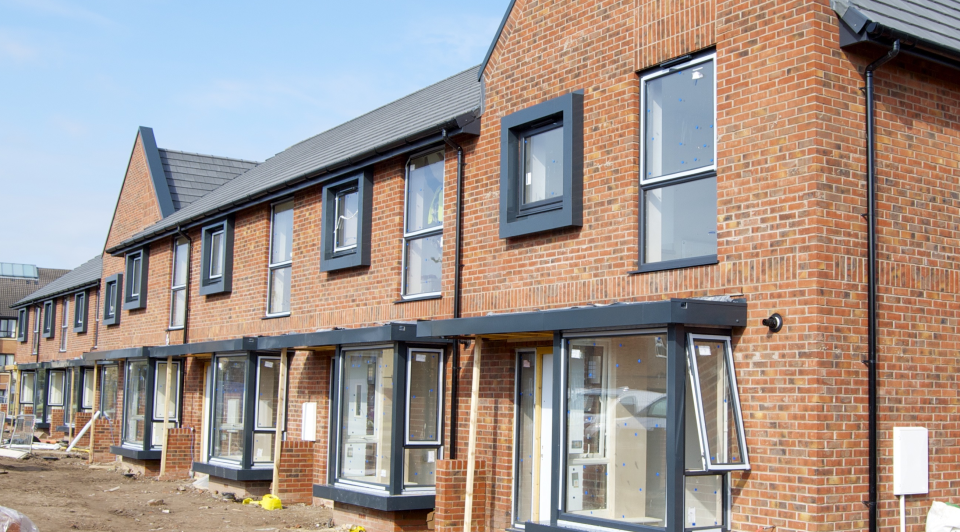Building to higher standards post-Brexit
Often when speaking with housing industry contacts the response to “how is Brexit going to impact your business?” is “it depends on the deal”. Is there more that we (as industry or non-state actors) can do to make sure we, as a minimum, protect ourselves from the potential risks of Brexit and are able to grow and flourish outside the EU?
There are a few challenges in housebuilding at the moment, as highlighted in the 2017 Housing white paper. Namely skills, access to finance (particularly for smaller developers) and the way that we build. Exiting the EU could either exacerbate these issues or add a few more.
The cost of building homes appears to be going up, not only because finding the right skilled people is a challenge, but also because the supply of materials for construction is going up. And this is before we have exited the EU. Coupled with the pound struggling against other currencies, imports are becoming more expensive.
So how can we turn this challenge into a positive? The key is innovation, thinking differently, going above and beyond.
Homes built (or partly built) in offsite locations is potentially one solution, it is possible to mechanise more of the roles, which in turn means different types of skills are needed – which are likely to be more attractive to younger generations, think computer programming rather than a muddy building site.
However, even homes built in factories need components and materials. If these components and materials are made in the UK, then that de-risks the potential for import duties and currency fluctuations.
Component and material manufacturers need the security of business, so if there is a housing market crash in the UK they need to be able to look elsewhere for business. In order to import into the EU, components and materials are still going to have to be made to EU standards, therefore the only way to differentiate is either on price or to go above and beyond.
Nissan has just launched a battery for a home (to store energy from Solar PV, etc). This UK made product (it is manufactured alongside the batteries for their electric cars) is not only innovative but also a key product that can be exported. Nissan exports around 50% of the cars it makes in Sunderland.
Driving higher housing standards is not only better for those who live in these new homes (particularly at a time when quality is of key concern for new house buyers). But it also drives exports to the rest of the world. BREEAM is the world leading standard on sustainability, it has been developed in the UK which often means that in the 78 countries that BREEAM operates in, it is joined with UK skills, components and manufacturing.
Home Quality Mark (HQM) is the BREEAM standard for new homes, it drives up standards in new homes, which is better for householders – but it could also be better for exports. HQM’s predecessor the Code for Sustainable Homes along with BREEAM drive innovation in many different product areas, including insulation, ventilation systems, low impact materials and flood resilience products.
Many of these products are now exported all over the world. Equally, the innovative planning, design and engineering knowledge that go alongside these products are also exported. This exporting of knowledge and products is going to be a key plank in a successful UK, post-exit of the EU.
Those who specify standards for buildings in the UK and abroad should be mindful of the impact of specifying standards that originate in other parts of the world. If it is a German standard, it may well mean German products, if it is a US standard, it may well mean US knowledge. While it is good to have a mix of standards that learn from different parts of the world, the implications are not always technical but also wider economic ones.
High standards such as BREEAM and HQM are already helping the UK export – this is something that we need to do more of as we exit the EU.
This article was originally published here on 30 May 2017 by BRE Buzz. It was written by Gwyn Roberts.
--BRE Buzz
[edit] Find out more
[edit] Related articles on Designing Buildings Wiki
Featured articles and news
Latest Build UK Building Safety Regime explainer published
Key elements in one short, now updated document.
UKGBC launch the UK Climate Resilience Roadmap
First guidance of its kind on direct climate impacts for the built environment and how it can adapt.
CLC Health, Safety and Wellbeing Strategy 2025
Launched by the Minister for Industry to look at fatalities on site, improving mental health and other issues.
One of the most impressive Victorian architects. Book review.
Common Assessment Standard now with building safety
New CAS update now includes mandatory building safety questions.
RTPI leader to become new CIOB Chief Executive Officer
Dr Victoria Hills MRTPI, FICE to take over after Caroline Gumble’s departure.
Social and affordable housing, a long term plan for delivery
The “Delivering a Decade of Renewal for Social and Affordable Housing” strategy sets out future path.
A change to adoptive architecture
Effects of global weather warming on architectural detailing, material choice and human interaction.
The proposed publicly owned and backed subsidiary of Homes England, to facilitate new homes.
How big is the problem and what can we do to mitigate the effects?
Overheating guidance and tools for building designers
A number of cool guides to help with the heat.
The UK's Modern Industrial Strategy: A 10 year plan
Previous consultation criticism, current key elements and general support with some persisting reservations.
Building Safety Regulator reforms
New roles, new staff and a new fast track service pave the way for a single construction regulator.
Architectural Technologist CPDs and Communications
CIAT CPD… and how you can do it!
Cooling centres and cool spaces
Managing extreme heat in cities by directing the public to places for heat stress relief and water sources.
Winter gardens: A brief history and warm variations
Extending the season with glass in different forms and terms.
Restoring Great Yarmouth's Winter Gardens
Transforming one of the least sustainable constructions imaginable.
























